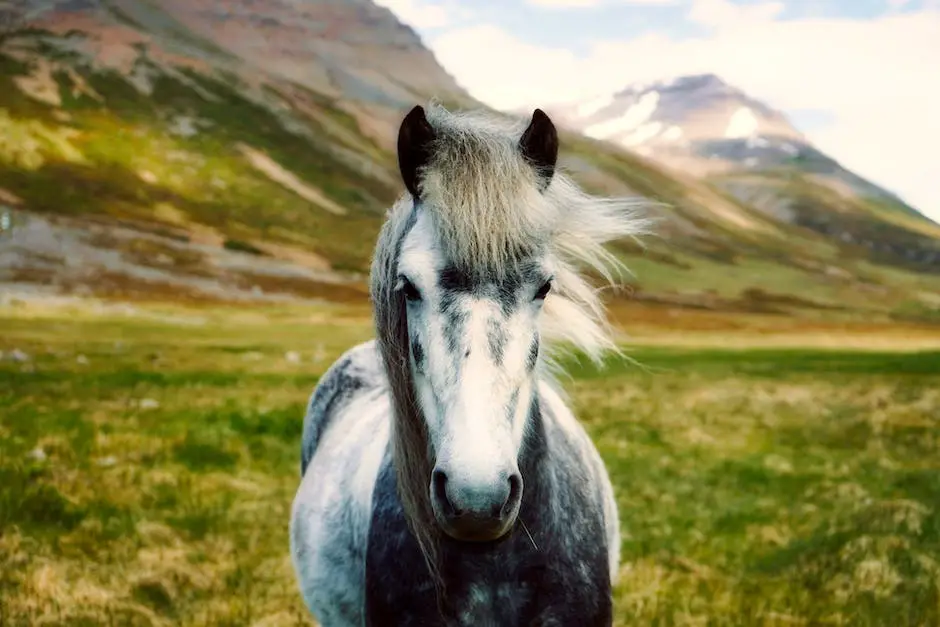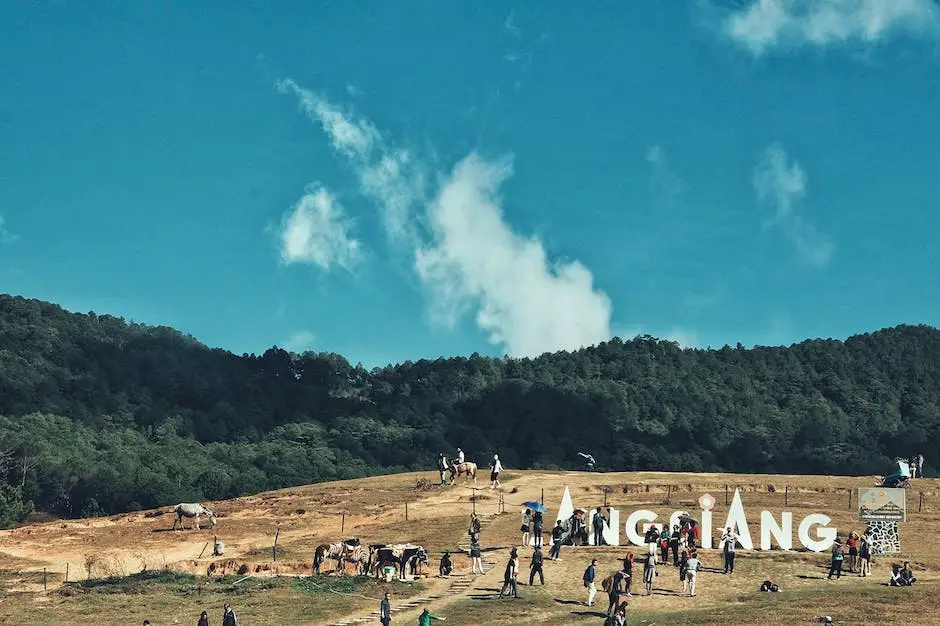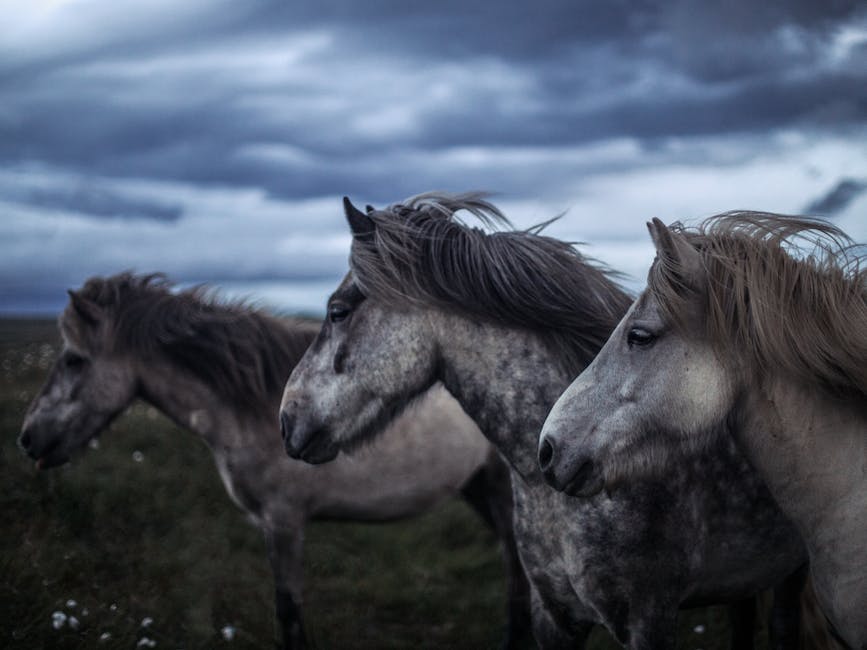Renowned for their tremendous strength, endurance, and gentlemanly demeanor, the Trait du Nord breed of horses are an epitome of grace and power. Being one of Europe’s oldest and highly regarded draft breeds, they carry a rich nostalgia of antiquity, having their roots entrenched deep into the historic soils of northern France. This breed is admired for its instrumental role in changing the European agricultural landscape, taking it from the Neolithic Age to the modern times. The story of the Trait du Nord isn’t just about a breed of horse; it’s about the growth, development, and adaptation of a breed down the centuries, molded by their environment, human needs, and desires. Its physical characteristics – its size, its imposing stature, its diligence – make it stand out and its temperament makes it loved and revered.
Table of Contents (Horspedia)
Origin and History of the Trait du Nord Horse
Origin of Trait du Nord Horse
The Trait du Nord Horse, also referred to as the “Flanders Horse,” finds its origin in the historic region of Nord-Pas-de-Calais in northern France. They are believed to have descended from primitive Northern European horses, bred with selected Asian and Arabian breeds to enhance their size and power.
Developed primarily for their strength in agricultural settings, the Trait du Nord Horses are literally translated to “Northern Draft Horse” in English. These horses emerged in the early 19th century and were initially small-sized animals, significantly improved throughout the years with careful breeding programs: with Belgian, Dutch, and Ardennes horses to augment their strength and size.
Historic Significance of Trait du Nord
The Trait du Nord horses played a significant role in the agricultural sector due to their immense strength and hardworking nature. They were mainly used for hauling heavy loads, primarily coal from the mines in their native region. Farmers, coal miners, and transport workers relied heavily on these horses.
In the late 19th and early 20th centuries, the breed’s stocky build and robust strength made them the favorite choice for use in heavy haulage and agricultural work. The Trait du Nord’s numbers peaked in the early- to mid- 20th century, when the breed was widely involved in heavy farm work, transporting goods, and even serving in the war effort.
Due to mechanization and a decrease in the need for draft animals after World War II, the Trait du Nord’s numbers dwindled dramatically. By the late 20th century, there was significant concern for the breed’s continued existence.
Role in Historical Events
The Trait du Nord horse also played a crucial role in various historical events. During World War I, these equine giants were enlisted to serve in the Belgian and French armies to haul heavy artillery. Owing to their unmeasurable strength and endurance, Trait du Nord horses were widely used in the war effort, contributing to the logistics and transportation of supplies on the front lines.
The Trait du Nord horse breed is a gem of significant historic value, with profound impacts in areas such as agriculture and warfare, thanks to its unparalleled strength and impressive build. There’s meritorious prestige attached to this hardy breed’s centuries-long history. The Trait du Nord continues to be cherished, with its unique traits and fascinating background captivating many.

Physical Characteristics and Temperament
Introducing the Trait du Nord Horse: A Unique Blend of Strength and Gentleness
A sight to behold, the Trait du Nord horse, named after its northern French roots, is a distinguished breed that is known for its robustness, visual appeal, and surprisingly docile disposition.
This heavy draft horse commands respect with its substantial size, standing tall at a height of anywhere between 15.1 and 16.3 hands. Its weight further emphasizes its magnitude, tipping the scales between 1,400 and 2,200 pounds.
The Trait du Nord is designed for strength, with a broad chest, compact build, short powerful legs, and large solid hooves. Despite their size, they have a proportionate head with expressive eyes. Their straightforward profile may showcase a minor convexity. A short and well-muscled back and a sturdy neck are other defining features of this breed.
Most Trait du Nord horses wear a chestnut or bay coat. However, some horses have black and roan coats as well. Their thick manes and tails sport a variety of shades ranging from light to dark.
Ironically, despite their imposing stature, Trait du Nord horses are renowned for their docile and composed demeanor. Their intelligence and sociability are prominent traits, making them not only reliable work horses but also apt for equestrian competition, therapeutic activities, and ideal pet companions.
Known for their work ethic, the Trait du Nord horses possess resilience that sprouts from their historical farming and draught work. They can adapt to different climates, proving their extraordinary survival instincts. Yet, like any other breed, they require consistent physical and mental stimulation for maintaining optimum health.
Whether you are a novice or an experienced horse person, the Trait du Nord horse, with its blend of beauty, gentleness, and strength, is a breed that will leave you intrigued and awe-inspired.

Uses and Roles of the Trait du Nord in Modern Times
The Evolving Role of the Trait du Nord Horse: From Farms to Forests
The heavy draft horse breed, Trait du Nord, which hails from France, has transitioned from its historical role in agricultural labor to now primarily serving in forestry. This role shift is due to modern machinery reducing the need for horses and human labor in agriculture. Back in the day, the Trait du Nord horses worked hard – plowing fields, and transporting goods were their daily tasks. Today, their innate capability to skillfully tread through thick forest spaces, and their gentleness that prevents damage to saplings and seedlings, makes them ideal for the forestry sector. This breed, with its rich history and its evolving role in modern society, continues to make important contributions to our world.
Trait du Nord in Equestrian Sports
While not traditionally thought of as sports horses, the Trait du Nord has found a place in equestrian sports. Their large size, strength, and stamina make them excellent for pulling competitions – a sport that requires horses to pull heavy loads across a certain distance. These horses are also frequently seen in traditional horse pulls, where they excel because of their impressive strength.
Trait du Nord in Conservation Efforts
The Trait du Nord has been the subject of conservation efforts due to its declining population. Since the 1970s, initiatives have been taken to protect the breed and revive its population through selective breeding and maintaining a studbook. These horses are now recognized as a symbol of regional heritage and biodiversity.
Trait du Nord in Recreational Riding
The Trait du Nord is also seen in recreational riding, owing to their calm and steady temperaments. Despite being large and powerful draft horses, they are known to be docile, making them suitable for therapeutic riding programs and recreational trail riding.
Trait du Nord in Horse Shows and Exhibitions
In recent years, the Trait du Nord has been displayed in horse shows, heritage festivals, and local exhibitions to raise awareness about the breed and its declining numbers. These events are aimed at educating potential owners about the breed’s historical and cultural significance and showcasing their versatility in various disciplines.
Trait du Nord as Therapy Horses
Because of their docile and calm temperaments, the Trait du Nord horses have been employed in equine-assisted therapy programs. Their large size can accommodate adults, and their patience and gentleness make them suitable for people with physical, cognitive, and emotional challenges.
In conclusion, the Trait du Nord, which once faced the threat of extinction, has proved its resilience and adaptability over time. The roles it plays have shifted and evolved, but its versatility is evident in a myriad of capacities such as forestry work, equestrian sports, and therapeutic riding.

Health and Maintenance of the Trait du Nord
Health and Lifespan of the Trait du Nord
Originating from northern France, the Trait du Nord, a breed of heavy draft horse, commonly boasts a robust health profile and negligible specific breed health issues. They are known for their impressive endurance and substantial build, contributing to their typical lifespan of 20 to 25 years. Exceptional cases have even been known to exceed this average. Despite their impressive resilience, however, they are not completely immune to the general health concerns that all horse breeds face.
Common Illnesses and Diseases
Trait du Nord horses, like other large draft breeds, are susceptible to certain conditions. These can include equine metabolic syndrome, laminitis, and osteoarthritis due to their size and weight. In general, they are less prone to genetic disorders compared to other horse breeds. Correct management and preventative care can mitigate many of these conditions. Regular veterinary check-ups are essential to ensure early detection and appropriate treatment of any potential health issues.
Diet and Exercise
Proper diet is key for the Trait du Nord’s health. These horses do not require a diet distinctive from other horse breeds. A diet primarily consisting of good quality hay or pasture, supplemented with commercial horse feeds if needed, can sufficiently meet their dietary needs.
As they are active and strong horses, regular exercise is critical to prevent obesity and related health issues. Providing ample turnout time and regular work sessions can help maintain their weight and muscle condition.
Grooming Needs
Trait du Nord horses have tough, feathered feet that require regular maintenance. Regular hoof care including routine trimmings and inspections for hoof diseases are necessary. Besides this, they benefit from standard grooming practices including brushing to remove dirt and dead hair, and bathing when necessary.
Care and Maintenance Tips
The Trait du Nord horses not only require physical care but also mental stimulation. They are intelligent and social animals that enjoy human interaction and mental challenges. Regular training sessions can help keep them mentally engaged.
In terms of housing, they do well in standard horse stables but need enough room to move around comfortably due to their large size. While they adapt well to various weather conditions, provision for adequate shelter from extreme heat, cold, and precipitation is essential.
Lastly, despite their resilient nature and fewer health problems, regular veterinary care, and preventative treatments like deworming, vaccinations, and dental check-ups are crucial to keep the Trait du Nord horse healthy and thriving.

The Trait du Nord, albeit formidable, does demand a certain level of care and attention from its owners. Given their heavy build, they require sufficient nutrition, regular exercise, and a distinct health check routine. Ensuring their health and longevity not only secures a workhorse par excellence but also a reliable companion to last a lifetime. Their maintenance, in turn, is a testament to human responsibility towards these magnificent creatures that have served humanity for centuries. Whether they are ploughing the fields, lending their speed to equestrian sports, or simply offering their companionship for recreational riding, the Trait du Nord breed is an embodiment of dignity, vitality, and resilience. From their deep-rooted history to their contemporary uses, they continue to be a remarkable symbol of not just hard work, but also of beauty, strength, and endurance in the equine world.